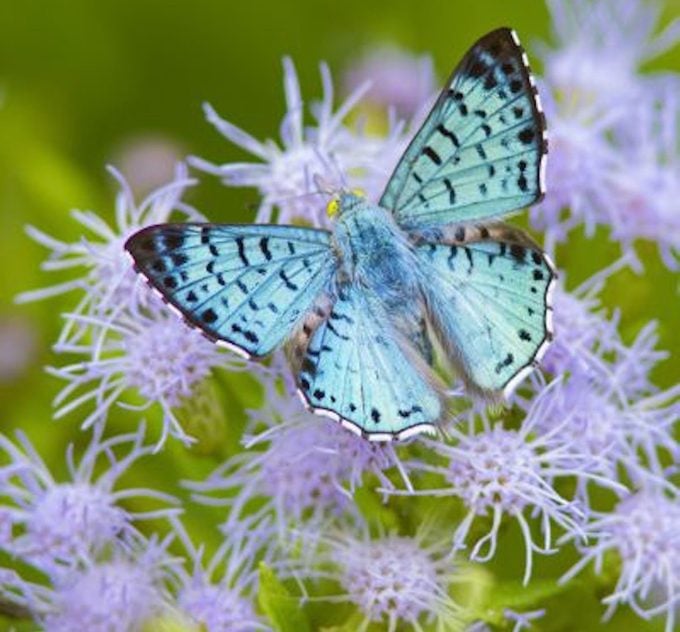Butterfly Hotspot: Travel to South Texas to See Hundreds of Rare Butterflies
Updated: Oct. 11, 2021
Learn about the many rare butterfly species that visit the Lower Rio Grande Valley and how and when to best observe them.

South Texas is well documented for tropical bird diversity—known for green jays and great kiskadees—but butterflies of the region also reflect a southern influence. If you want to see rare butterflies, such as a blue metalmark, pavon emperor or white-striped longtail, you’ll need to head for the border.
Rare Butterfly Species
The Lower Rio Grande Valley, a three-county region at the southern tip of Texas, is home to 300 butterfly species, including nearly 100 not found any farther north. People travel to this tropical region for a chance to see rare gems such as crimson patches, Mexican bluewings and two-barred flashers. Follow these suggestions for identifying butterflies.
According to Marianna Trevino-Wright, director of the National Butterfly Center near Mission, Texas, “We’ve observed 240 species of butterflies and 286 species of birds on our 100 acres.” She says, “It is easy to rack up lots of observations in a short visit.”
Butterfly-watching is an excellent social activity. Butterflies aren’t as easily spooked as birds. Photographers find the hobby particularly rewarding, especially on cooler mornings when the flutterers are less active. Before the sun dries the early dew, many butterflies will bask with “wings spread out like solar panels,” Marianna says.
Butterfly Habitat and Host Plants
The National Butterfly Center has an “if you plant it, they will come” philosophy. “People always ask why we have such a great volume and diversity of butterflies,” Marianna says. “Well, it’s because we bait them. By providing both their preferred nectar and host plants, we sort of lure them in.” Here’s how to create a wildflower garden especially for butterflies.
Butterflies are found in the gardens, but they also flit about the prairie and forest landscapes. Some feed on grass pollen; others key in on tree sap. Many get nutrients from animal waste. Butterflies are also reliant on their host plants, from which males patrol in search of mates and where females lay eggs.
Best Time to See Rare Butterflies
The early bird may get the worm, but butterflies prefer the brunch hour. Butterfly-viewing heats up in midmorning. The stunning insects are most active under sunny skies and temperatures above 70 degrees Fahrenheit. The evening roost period can be productive for butterfly seekers, too. Marianna suggests looking for clusters of zebra heliconians roosting together.
While in South Texas butterflies are found any day of the year, they appear in booms responding to bursts of flowers after rainfall events. March, October and November tend to have consistent action, although drought can impact this. For nature lovers, there is no wrong day to visit the borderlands of South Texas for birds and butterflies.




















